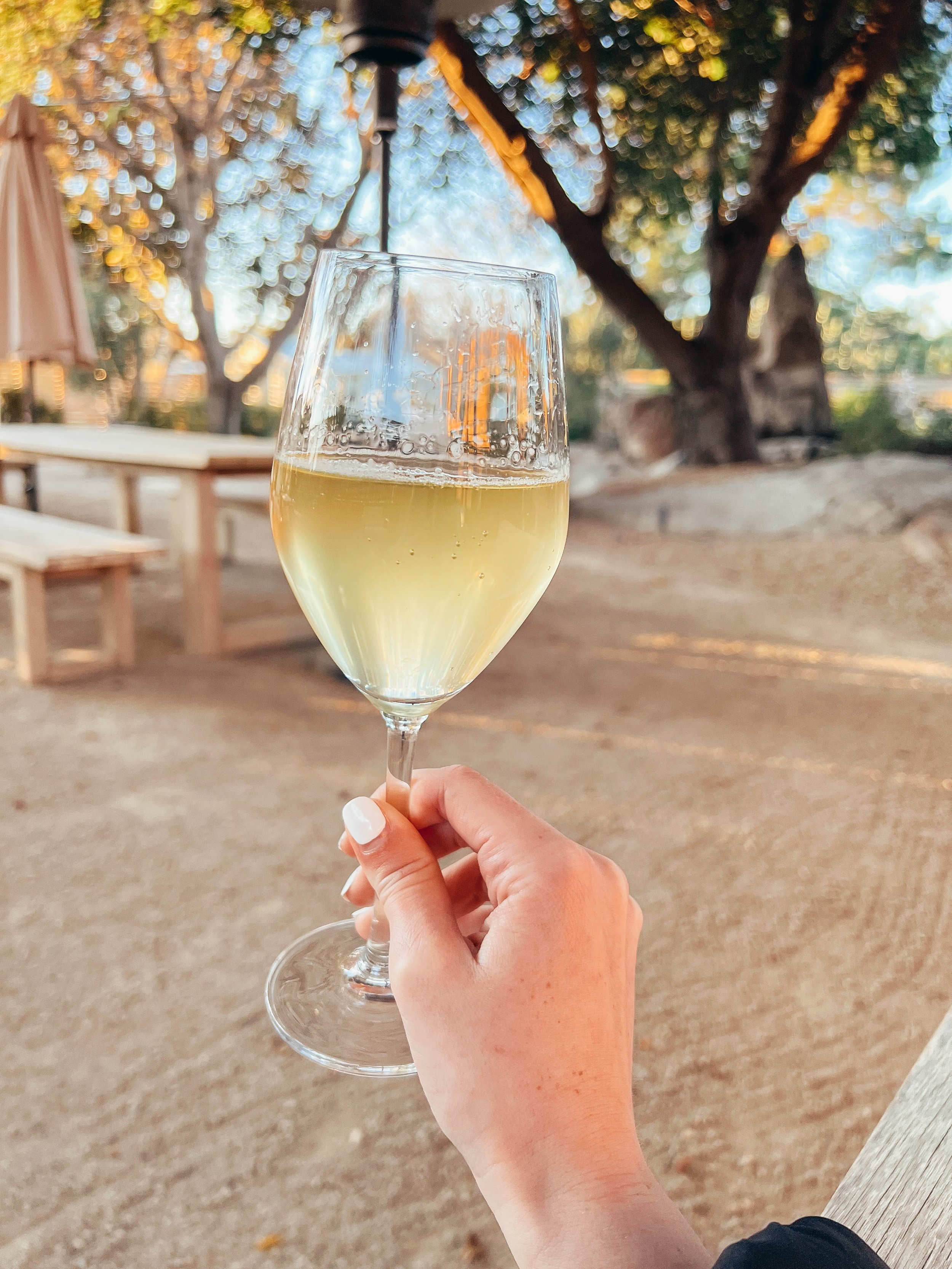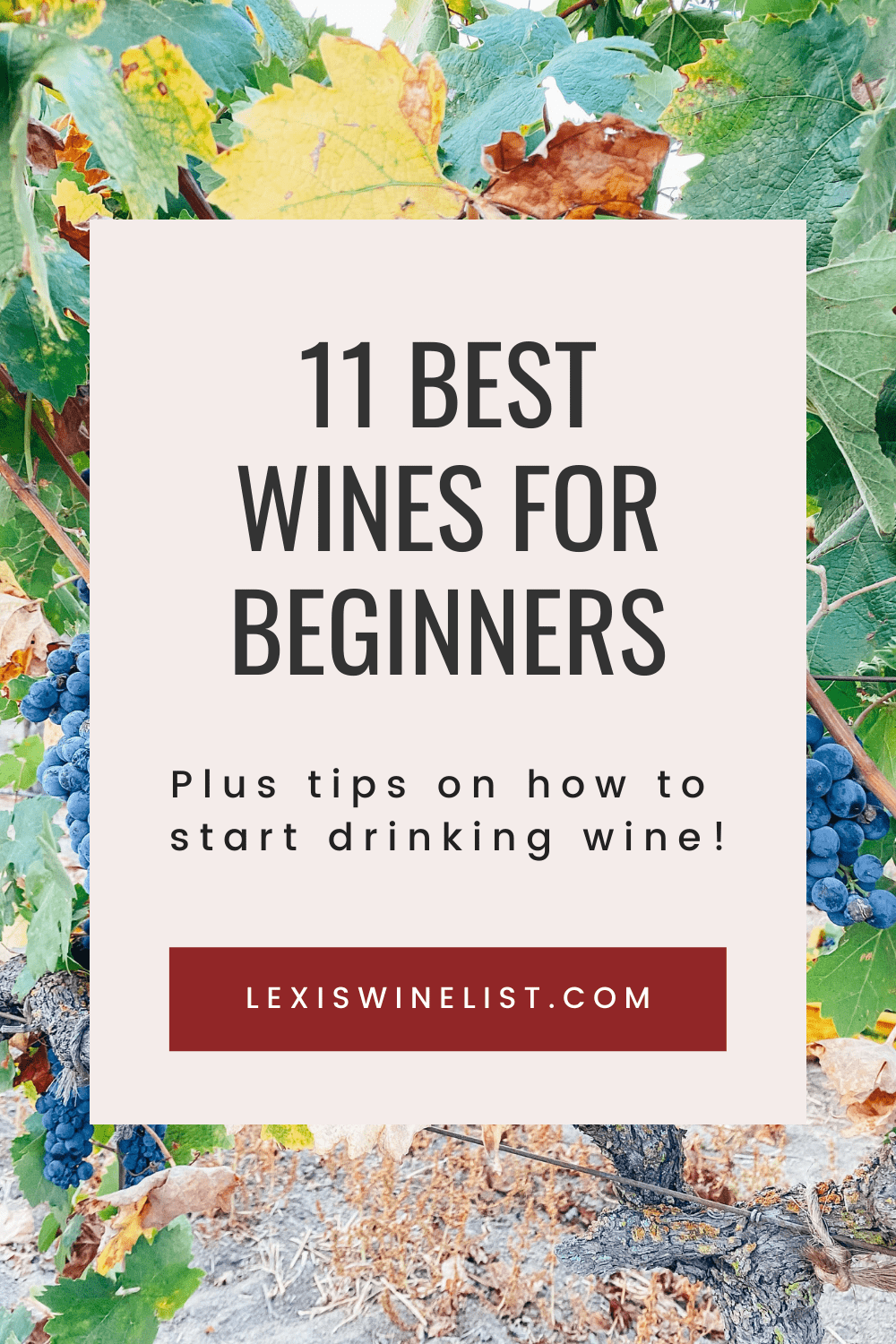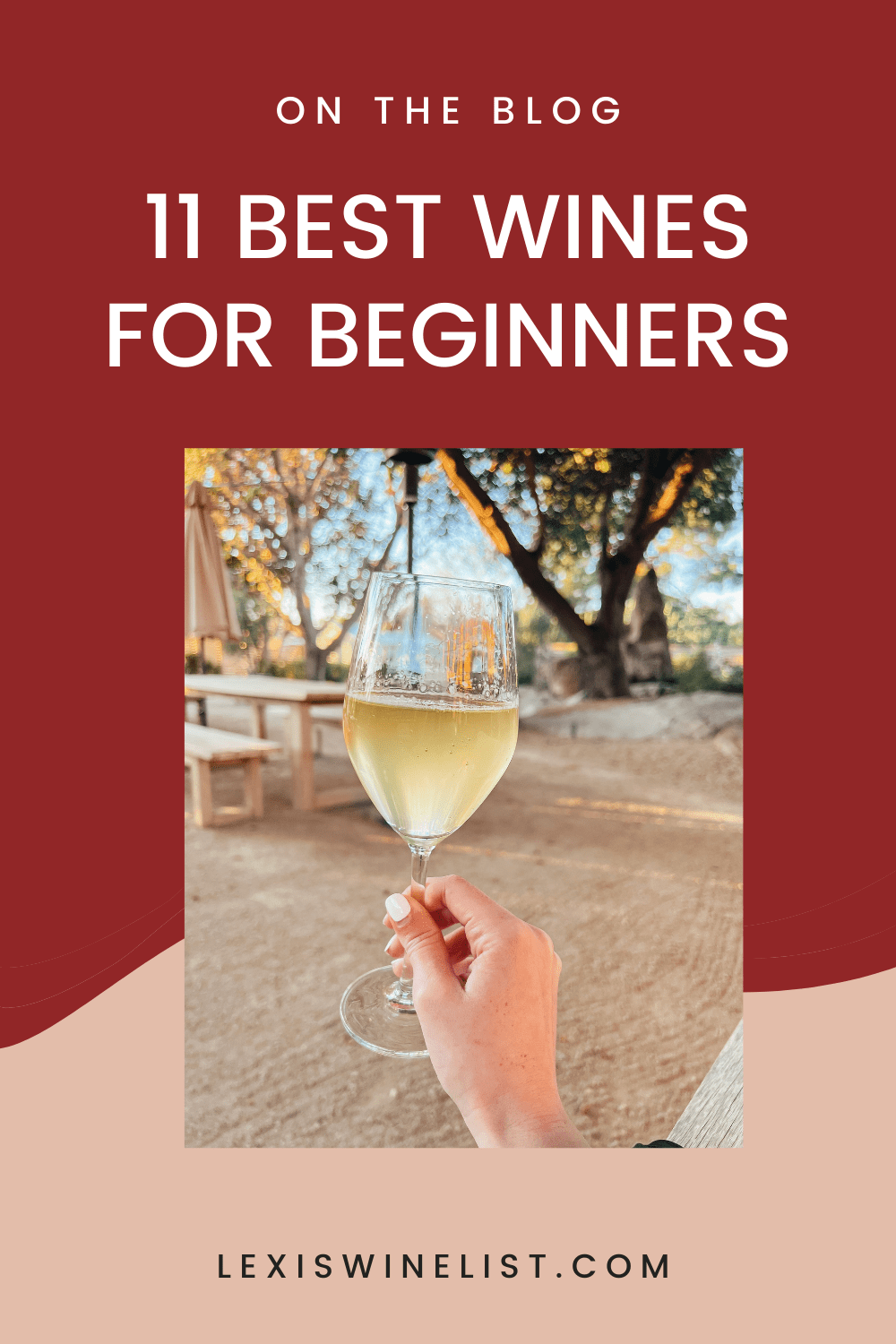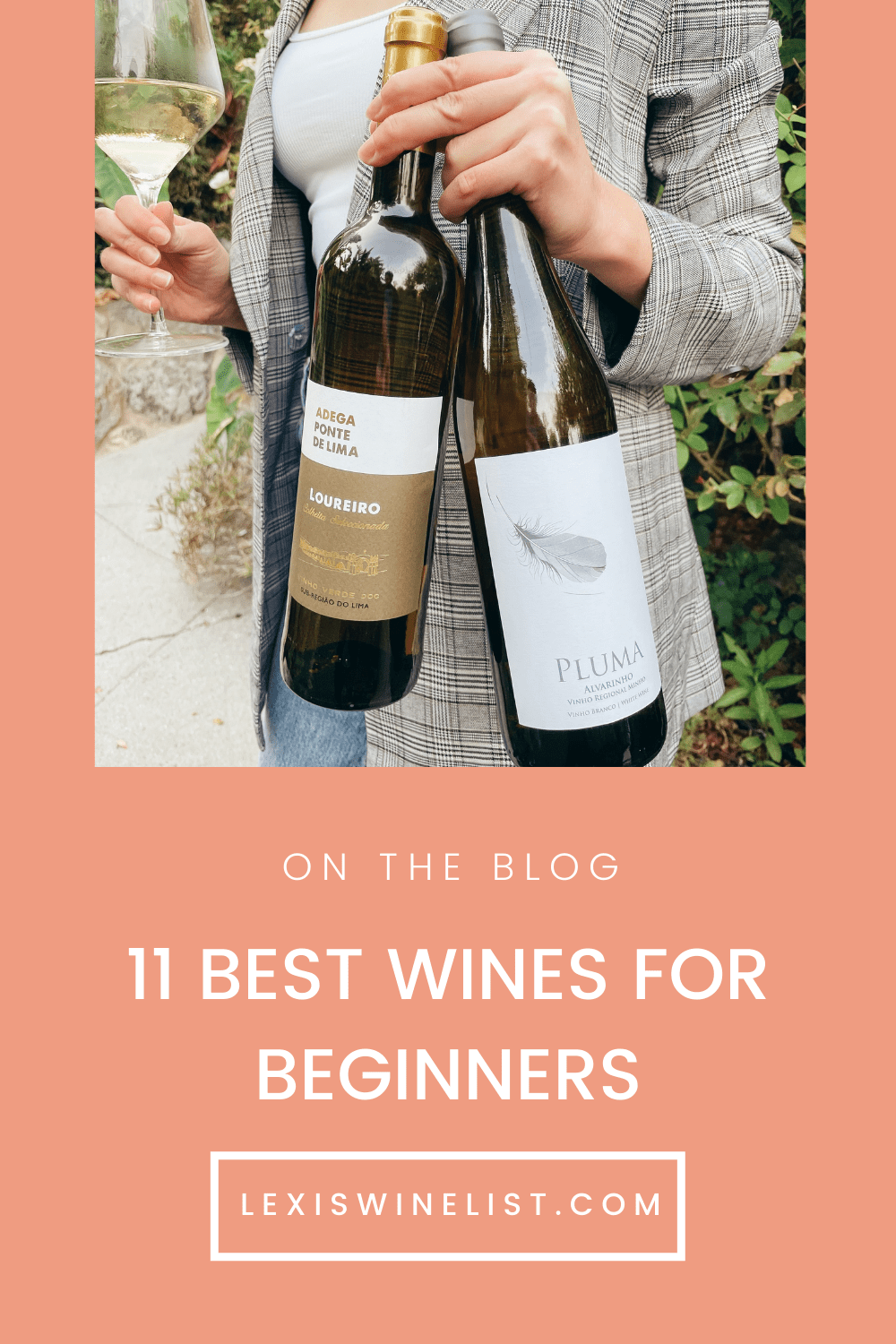11 Best Wines for Beginners Plus Tips on How to Start Drinking Wine
Some questions I get asked frequently are “What is the best wine for beginners?” or “Should I start with red or white wine?”
And I totally get it. When I first started drinking wine, I did not like dry wine at all. Frankly, I wanted to like wine, but I didn’t know where to start.
I do believe wine can be an acquired taste, and the best way to find out what kind of wines you like is to just keep trying new wines and taking note of your experiences with each one you taste.
In this post, I’ve listed the best wines for beginners to get you started on your wine journey, so you can get familiar with your palate and start enjoying wine more.
Pro tip: If you’re interested in learning more about wine but don’t know how to begin, start by booking a virtual wine tasting with me to learn the basics of wine tasting and feel more confident in talking about wine.
Or join me in wine country! I host a Wine Retreat in Tuscany every year, and we’ll be back in October 2026. Fill out this quick form to get your name on the waitlist and receive more info.
11 Best Wines for Beginners Plus Tips on How to Start Drinking Wine
You might be thinking, “I don’t like wine, but I want to like it.” Well, before we get into the best wines for beginners, here are some tips on how to start drinking wine (and enjoying it).
If you want to cut to the chase, here’s a curated list of my favorite wines along with information on where to buy them - from everyday drinkers to special occasion bottles, there’s something for everyone here. I update it frequently, so make sure you bookmark it!
Note: This post contains some affiliate links that if clicked on and used to purchase something may pay me a small commission at no extra cost to you. Thank you for your support!
Tips on how to start drinking wine
Always try something new
If you’re at a restaurant and you see a wine on the list that you don’t recognize, order it. You can always send the glass back if it’s really not your jam.
Try to evaluate the wine, though, and let the server know what bothered you about it. This will help them lead you in the right direction to find something you enjoy more.
Or if you enjoyed this new wine, pay attention to the flavors or reasons why you liked it and take note.
Speaking of…
Take notes
This is an important step. When you’re starting out on your wine journey, it’s hard to remember which wine you tried where. What was the name of that white wine I tasted and loved last month??
To avoid this, create a notes page in your phone, take photos of the wine bottles you enjoy, or use a tracking app like Vivino to keep your tasting notes handy (my personal favorite).
Note: Be wary of using Vivino as a way to see if a wine is “good” or not. I use the app to simply store images of wine labels, along with my personal notes. Remember, everyone’s palate is different, so a lower score on Vivino doesn’t necessarily mean you won’t like the wine.
Ask questions
If you’re at a restaurant or a wine shop, ask the staff questions about where the wine came from, what grapes were used, winemaking techniques, etc.
The person helping you most likely knows more about the inventory at their store or restaurant than you do, so feel free to ask them anything - there are no stupid questions.
If you’re speaking to the buyer or sommelier, you might even get to hear a personal anecdote about the winemaker or the winery’s history, which is one of the coolest topics to explore in wine.
Attend wine tastings
Obviously it’s great to travel to wine country, but with the recent shift of IRL events going virtual, there are so many wine experiences you can attend, without even leaving your home.
Feel free to book a private wine tasting with me to help you get to know your palate and gain the skills and vocabulary to help you discover new wines you love.
Explore different wine regions
If you enjoy a specific grape from one region, be sure to try it again from a different region. Due to climate, terroir, winemaking practices, and more, grapes grown in various regions will express unique flavors.
Exploring the same varietal wines from different regions can help you understand how all of these factors influence the wine in your glass.
Relate a wine to your experience with that bottle
For me, wine is just as much about the setting you’re enjoying it in, as it is about what’s in the bottle.
Have you ever purchased a wine at a winery that you really enjoyed while sipping it and taking in the vineyard views, but when you take the bottle home and open it on your couch, it doesn't taste as good as you remembered?
Maybe you had a wine you thought you’d never enjoy, but it was shared over a delicious meal with friends. Not only will the wine taste better in that experience, but each time you try that wine again, hopefully it will evoke those fond memories.
Tying a specific bottle or style of wine to an experience is one of the easiest ways to remember it. This ability to travel in through the glass is one of my favorite things about wine!
what are the best wines for non-wine drinkers?
Now that you’ve agreed to embark on this wine journey with yourself and find out which kind of wines you really enjoy, here are the best wines for beginners.
How did I select these beginner wines? When you’re just beginning to drink wine, I believe it’s best to start out with easy-drinking wines that you can drink without food.
These wines are fruit-forward, meaning they have more fruity flavors than earthly flavors, and they are overall easy-sippers because they are well-balanced. The acid is not too pungent, the tannins aren’t too drying, and the body won’t be overwhelming for a beginner’s palate.
In my opinion, these are the easiest wines to drink and enjoy when you first start learning about and drinking wine. And don’t get me wrong, I still thoroughly enjoy these wines as a more “advanced” wine-drinker, but these are great wines to try if you’re just starting out.
best white wines for beginners
The best white wines for beginners are silky or smooth on the palate, with balanced acidity and fruity flavors.
1. Vinho Verde
Vinho Verde is a light-bodied white wine from Portugal made of local grape varieties like Alvarinho, Loureiro, and Arinto. It’s fruity, crisp, and refreshing, with notes of peaches, green fruit, citrus, and melon.
Vinho Verde can also have a slight effervescence when you first pop the bottle, making it all the more crushable. Not to mention, the alcohol level of Vinho Verde is often quite low, so it’s perfectly easy-drinking without having to pair it with food.
Try these Vinho Verde bottles:
Aveleda Solos de Xisto Alvarinho - $21.99
2. Pinot Grigio
Pinot Grigio is a dry white wine from Italy that’s perfect for beginner wine-drinkers. It’s light-bodied, with notes of lemon, lime, and occasionally some stone fruits (i.e. apricots, peaches, etc.)
Pinot Grigio is a great starter wine because it’s often pretty simple, with fruity notes and not a whole lot else going on. You can easily drink this wine on its own, and it’s not going to break the bank, either.
Try these Pinot Grigio bottles:
Terlato Family Vineyards Friuli - $21.99
Schiopetto Collio DOC - $29.99
3. Sancerre
Made from Sauvignon Blanc grapes, Sancerre is a white wine from the Loire Valley of France. Fun fact: this is actually the region that the beloved Sauvignon Blanc grape is from.
I’d argue this is the best version of Sauvignon Blanc for beginners because it’s smooth and not as pungent, citrusy, or herbaceous as other expressions of this grape. With Sancerre, you’ll find balanced flavors of green fruits, flowers, and minerality.
Try these Sancerre bottles:
Lucien Crochet Croix du Roy - $39.99
Pascal Jolivet Sancerre - $41.99
4. Vermentino
Vermentino is a light-to-medium-bodied white wine produced mainly on Italy’s island of Sardinia.
I like to call Vermentino the “island wine”, not only because the grape grows well on sun-drenched island terrains (it’s also grown in Sicily and Corsica), but it can also have vibrant tropical fruit flavors like pineapple. Basically, if I was stranded on a deserted island and could only bring one white wine with me, I would choose Vermentino.
Vermentino is also known for its green fruity flavors like green apple or pear, and it can also have a slightly nutty undertone. There are different expressions of the grape that may be aged in oak or stainless steel, but I typically find this fruit-forward wine to be smooth and inoffensive.
Vermentino bottles to try:
5. Grenache Blanc
Grenache Blanc is a medium-to-full-bodied white wine from Spain that is now grown in many wine regions, including France and the United States. It has floral and fruity flavors like honeysuckle, melon, pear, peach, and citrus. I find Grenache Blanc to have a soft texture with balanced acidity, making it an easy wine to sip on.
Grenache Blanc bottles to try:
Epiphany Grenache Blanc - $22.99
Curran Grenache Blanc - $26.99
6. Prosecco
Prosecco is a sparkling wine from Northern Italy, and in my opinion, the best sparkling wine for beginners.
Prosecco is often fruitier and lighter-bodied than other sparkling wines like Champagne or Cava, making it refreshing and easy to drink. Made from a grape called Glera, this sparkling wine is produced using the tank method, a winemaking style that maintains the fruity flavors of the wine, like green apple, pear, and citrus.
There’s no oak-aging used for Prosecco, so it’s the closest thing to a sparkling fruit juice that can vary in sweetness levels. If you like a drier (not sweet) style of wine, look for “Brut” on the wine label, and if you want a sweeter Prosecco, “Extra Dry” or “Dry” are the key terms to seek out.
Additionally, Prosecco is often one of the most affordable styles of sparkling wine, so it’s the perfect wine for the beginning of your wine journey.
Prosecco bottles to try:
best red wines for beginners
The best red wines for beginners have low-to-medium detectable tannins (that drying or cotton-mouth sensation), juicy or fruit-forward flavors, and are easy to drink without food.
7. Gamay
Gamay is a light-to-medium-bodied red wine from France. It’s a cousin of Pinot Noir, but in my opinion, often fruitier and less earthy than its relative.
If you try Gamay in the form of Beaujolais Nouveau, you’ll find it to be light-bodied and extremely fruity, almost like alcoholic cranberry juice (which is not a bad place to start if you typically like sweeter drinks). This is the simplest expression of the grape, but other regions like Beaujolais Villages or Beaujolais Cru produce a more elevated wine from Gamay.
Wine made from Gamay is easy to drink without food, low in tannins, and the red fruit flavors make it the perfect wine for beginners.
Gamay bottles to try:
Louis Jadot Beaujolais-Villages - $14.99
Domaine Gilles Coperet Fleurie Les Roches - $19.99
8. Merlot
Merlot is a medium-to-full-bodied red wine originally from France, though now it’s grown all over the world.
I like to suggest Merlot for beginners because it is a very subtle wine, in my opinion. It often has a smooth palate, with medium tannins and flavors of cherry, plum, vanilla, and chocolate.
Overall, Merlot is an easy-sipper, especially when it hails from New World regions, like California or Washington.
Merlot bottles to try:
9. Cabernet Sauvignon
Cabernet Sauvignon is the most widely planted grape variety in the world for a reason - most people love it. With its juicy black fruits, vanilla undertones, and smooth palate, Cabernet Sauvignon is an easy wine to enjoy. The 2021 Cabernet Sauvignon from Davis Estates, a family-owned and operated estate located in Calistoga, Napa Valley, exemplifies this classic experience, showcasing a visual treat with its deep garnet hue and sparkling ruby edge. Enticing aromas of blackberry harmonize with hints of dried herbs and damp earth, creating an enchanting sensory journey.
If you’re just starting out on your wine journey, stick to Cabernet Sauvignon from New World regions, like California. These are going to be the fruitiest versions of the grape, tricking your palate into thinking the wine is sweet. The jammy flavors often make the wine rounder and easier to drink, distracting you from the tannins, or drying-out sensation.
Additionally, the acidity in Cabernet Sauvignon is typically medium, meaning it won’t be punching you in the face with pungent or sour flavors, either.
Cabernet Sauvignon bottles to try:
Zinfandel grapes hanging on the vine in Lodi, California.
10. Zinfandel
Zinfandel is a full-bodied red wine originally from Croatia. Today, you’ll find most expressions of this grape from California or Italy, where it’s called Primitivo.
Zinfandel can be very jammy, with notes of black and blue fruits, and often chocolate or sweet cinnamon. Though Zinfandel is typically not sweet, the concentrated, overripe fruit on the palate makes it juicy, almost thirst-quenching.
The acidity is low, and the tannins are often overshadowed by the fruity flavors, making this an easy-to-love wine, especially for beginners.
One thing to be cautious about with Zinfandel, however, is the high alcohol level (sometimes upwards of 15%) - be sure to stay hydrated!
Zinfandel bottles to try:
11. Lambrusco
Lambrusco is a sparkling red wine from Emilia-Romagna, Italy. It can range in sweetness levels, but I always find it to be quite fruity.
If you enjoy a drier style of wine, look for “Secco” on the label, and if you want to start out with a sweeter version of Lambrusco, “Semisecco” will indicate a higher sugar content in the wine.
If you’ve only been into white wines so far, Lambrusco is a great gateway red to start getting you used to the more intense structure and tannins red wines deliver. This is a super easy sipper and perfect for enjoying a chilled glass on its own.
Lambrusco bottles to try:
Venturini Baldini Montelocco - $17.99
what about the noble grape varieties?
To cover your basic wine knowledge, you might also want to explore the six noble grape varieties: Cabernet Sauvignon, Pinot Noir, Merlot, Chardonnay, Sauvignon Blanc, and Riesling.
These noble grape varieties are the most historically important grapes in the modern winemaking world; however, they might not always be the most easy-drinking wines for beginners.
As you can see, I’ve included some of these grapes on the list, but I wouldn’t consider all six of them to necessarily be the best beginner wines.
Once you’re ready to expand your palate, make sure you’re familiar with these important wines, as well.
I hope this list of best wines for beginners helps you feel inspired to start or continue your wine education journey. As you taste through these wines, you’ll find your palate will change over time. Keep note of which wines you are liking or disliking, and pay attention to how food pairings can change your experience with a wine, as well.
Remember, how you would like to go about your wine journey is totally up to you! And that’s the beauty of it - there’s no wrong way to start exploring the world of wine and getting to know your preferences.
If you’d like to learn more about how to taste wine like a pro and get to know your palate on a deeper level, book an in-person or virtual wine tasting with me.
If you enjoyed this post and would like to learn more about wine, you might like this post about what dry wine is and the best dry wines to try.
Ready to further your wine education? Enroll in a WSET class today and use code LexiStephens for a discount.
If you liked this post, pin it to Pinterest!













